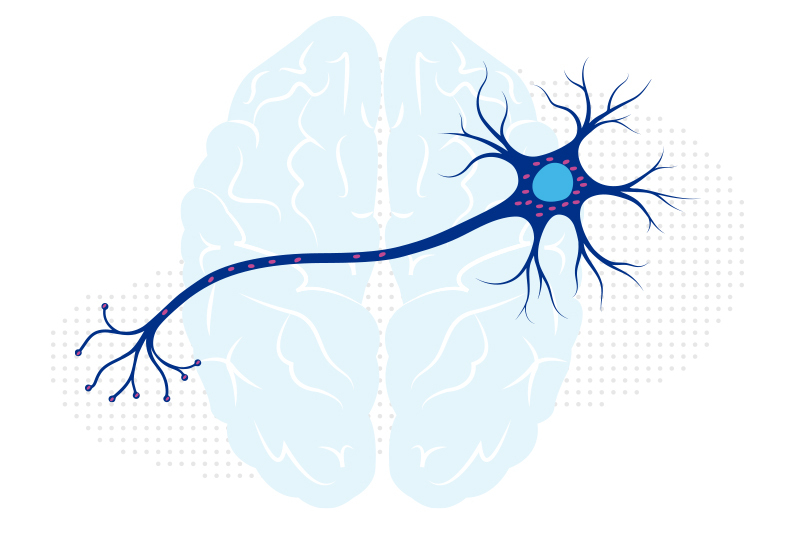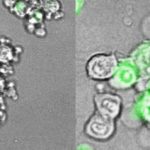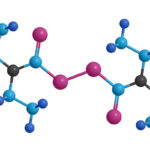A promising target for ALS and other neurodegenerative disorders: Curbing inflammation

When cells recognize a danger, such as an infection, they activate the innate immune system. Sentinel molecules sound an alarm, recruiting immune cells to take down the threat. In 2016, Judy Lieberman, MD, PhD and her colleagues at Boston Children’s Hospital showed that a protein called gasdermin D initiates a final, decisive step: pyroptosis, a fiery cell death in which the diseased or infected cell explodes, spewing out inflammatory signals.
Exciting new work — a collaboration between Lieberman’s lab and the lab of Isaac Chiu, PhD, at Harvard Medical School (HMS) — suggests that another member of the gasdermin family, gasdermin E, drives brain degeneration. Targeting the molecule could be key to protecting the brain in amyotrophic lateral sclerosis (ALS), a fatal, paralyzing motor neuron disease, and perhaps other neurodegenerative diseases.
“The unmet need for therapies for neurodegenerative diseases is huge,” says Lieberman, an investigator in the Program in Cellular and Molecular Medicine at Boston Children’s. “Our work opens up a whole new pathology that we could address.”
Gasdermin in the brain
Most gasdermins are found in immune cells in blood or mucosal surfaces that interact with the outside world, like the skin, lung, and GI tract, says Lieberman. But gasdermin E is different: It’s expressed in high levels in the brain.
“Gasdermin E is the most ancient form of this family of five proteins,” notes Lieberman. “The question was, what does this molecule do in the brain?”

That question also intrigued Chiu, whose research focuses on the nervous system. Teaming up with Lieberman, his lab used mouse models of ALS to study gasdermin E and created motor neurons from the cells of people with ALS via induced pluripotent stem cell technology.
“We showed that an innate immune molecule plays a role in neurodegeneration, which opens up a new avenue for thinking about neuronal health,” he says.
Protecting mitochondria and neurons
Gasdermin E levels were high in both the mouse and human neuron models of ALS. The models showed that when neurons encounter a hazard, gasdermin E becomes activated and drives damage to mitochondria, the powerhouse of the cell. In turn, the long neuronal projections known as axons, which carry electrical signals to other cells, retract — mirroring what happens to the motor neurons of people with ALS. In most cases, however, the cells survived.
But most exciting was what happened when the researchers intervened. As reported March 13 in Neuron, reducing gasdermin E expression in the human neurons prevented damage to mitochondria and protected against loss of axons. In the mouse model, knocking out gasdermin E prevented loss of motor neurons, reduced brain inflammation, ameliorated motor dysfunction, and prolonged survival.
If gasdermin E was not there, the axons looked incredibly healthy.
“The data Isaac’s team generated is so amazing and strong,” says Lieberman. “We saw axons degenerating in the ALS models, but if gasdermin E was not there, the axons looked incredibly healthy. This is the first study to show that this pathway in neurons could be at the root of a lot of disease.”
Data from the mouse model were equally dramatic. “Mice with ALS mutations become paralyzed, but when we knocked out gasdermin E, their symptoms were significantly delayed and their lifespans were extended,” says Himanish Basu, PhD, at HMS. Basu co-led the study with Dylan Neel, PhD, also at HMS.
An exciting first step
It’s still unclear what role gasdermin E might play in healthy brains — perhaps it protects the brain against infections — or how easily and safely it could be targeted with drugs without causing other side effects. But Lieberman and Chiu are excited about this first step — and hope gasdermin E could also be target for other neurodegenerative diseases involving damage to mitochondria.
Learn more about Boston Children’s Program in Cellular and Molecular Medicine
Related Posts :
-

Gasdermin E: A new approach to cancer immunotherapy
Tumors have figured out various ways to prevent the immune system from attacking them. Medicine, for its part, has fought ...
-

Disulfiram inhibits inflammatory gatekeeper protein: Could it be helpful in COVID-19?
Inflammation is the alarm system by which cells first respond to potential danger. But in excess, inflammation can be deadly. ...
-

The hidden burden of solitude: How social withdrawal influences the adolescent brain
Adolescence is a period of social reorientation: a shift from a world centered on parents and family to one shaped ...
-

The journey to a treatment for hereditary spastic paraplegia
In 2016, Darius Ebrahimi-Fakhari, MD, PhD, then a neurology fellow at Boston Children’s Hospital, met two little girls with spasticity ...





